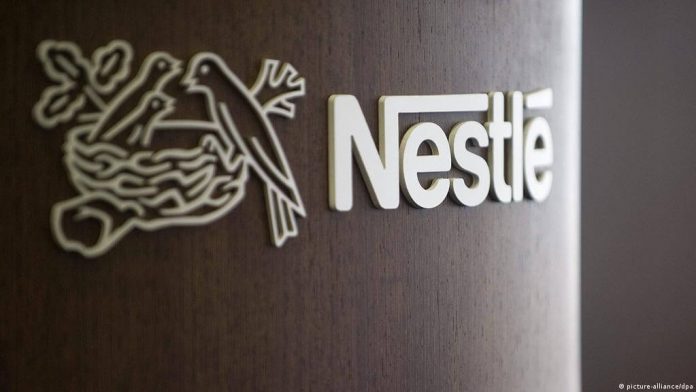This article is written by Sidharth Trehan, pursuing a Diploma in Intellectual Property, Media, and Entertainment Laws from Lawsikho.
Table of Contents
Introduction
A brand name or a trademark symbolizes the origin, quality, and goodwill attached to a business or a private. It could be anything by which consumers identify a business or a brand.
The company “Nestle” is currently the leading and one of the biggest companies in the FMCG domain/segment. But the journey of this “company” referred to as Nestle did not start like this. Nestle as the company was formed in 1905 by the amalgamation of Anglo-Swiss milk company and Farine Lactee Henri Nestle.
The company’s growth grew extensively during the first world war and followed by the Second world war, escalating its contribution beyond condensed milk and infant products. The company had a stronghold in the market. After 1950 Nestle started acquiring many corporations, including Cross and Blackwell, Findus, Libby’s, Rowntree Mackintosh, Klim, and Gerber. Therefore, Nestle is currently one of the most dominant players in the market, having stability and well-organized management that makes the company a leading brand in its sector.
Nestle and its intellectual property approach
Intellectual property, also known as “IP,” means intellect or creation of minds such as invention literacy, symbol, name, trademark, copyright and patent, and many other related rights. If summarised, Intellectual property “IP” means a bundle of all exclusive rights, both artistic and commercial.
The re-organization of the company’s internal IP legal structure has allowed Nestlé to control and defend its patents and trademarks in a centrally coordinated manner.
- Nestlé places high value on its IP and recognizes it as a significant financial asset, the legal protection of IP is a crucial element in maintaining this value.
- IP is valued and guarded to the same extent as other valuable assets within the business.
- Intellectual property rights are usually limited to non-rival goods, that is, goods that can be used or enjoyed by many people simultaneously – the use by one person does not exclude use by another.
- The term “intellectual property” denotes the specific legal rights described and not the intellectual work itself.
- The company has organized the IP department to have at least one patent lawyer and one trademark lawyer in each area of the business.
Importance of trademark for a brand like Nestle
A trademark is a sign or a name capable of differentiating the goods or services produced or provided by one enterprise from those of other enterprises.
A brand name is referred to as a trademark. A brand having its right on its name signifies that this particular name is associated with this specific company, and no one can claim the same in the future. Having a trademark registered means having a brand name written. In India, we can get anything registered for trademark such as:
|
Name |
|
Letter |
|
Sound mark |
|
Phrase |
|
Word |
|
Graphic |
The simple process of getting the trademark and brand name registered In India
|
Search for a Brand Name |
It’s the first step to select a brand name that needs to be registered. |
|
Making the trademark application |
TM1 needs to be filled followed with:- A Business registration concern. An image of your brand logo If required, a proof of claim of the proposed mark being used in another country. |
|
Filling the brand name registration application |
This can be done by going to the registrar’s office or online and requires completion of 20 days. |
|
The registration application is examined. |
When the application is received, it’s the role of the registrar to check whether the brand name complies with all the laws, and therefore it does not conflict with other existing registered or pending trademarks. |
|
Publication in the ITM Journals |
When the analysis is completed, the brand name is published in the IMT (Indian Trade Mark Journal) The time limit is 90 to 120 days. |
|
Issuing of registration certificate |
Therefore the brand name is registered. If there is no objection regarding the trademark, within 90 days, then the certificate is issued. |
Trademark of Nestle
- Reg. Trademark of Société des Produits Nestlé S.A. All rights reserved.
- People are permitted to browse the NESTLE “s website, reproduce extracts by way of printing, download them to a hard disk, or for distribution to other individuals.
- This is only to be done on the proviso that they keep intact all copyright and other proprietary notices and that the above trademark notice appears on such reproductions.
- No reproduction of any part of this website may be sold or distributed for commercial gain, nor shall it be modified or incorporated in any other work, publication, or website.
- The marks, logos, characters, and service marks (collectively “Trademarks”) displayed on this website belong to the Nestlé Group.
Protecting its brand name
Any action against the registration of similar or identical marks
The method for registering an identical or a similar trademark is by using the defense of honest concurrent use, which is stated under Section 12 of The Trademark Act 1999. As per the law, the power of decision is with the registrar; therefore, the allowance of this trademark is with the registrar. Five factors have been mentioned to use “The defense of honest and concurrent use.”
- The use regarding duration, quantity, and area.
- The explicit use of honesty of concurrent use.
- The amount of confusion is likely to cause inconvenience to the people.
- If there exists any evidence of such confusion.
- The amount of inconvenience caused to any parties if the concurrent use is approved.
What are the special protections and rights associated with Nestle as a brand name?
The Indian trademark law signifies protection to trademarks that are ‘well known in nature and safeguards or protects them from passing off or infringement.
The TM Registry recognizes a well-known mark in India based on International, National, and Cross-Border reputation.
“The Trademarks Act 1999” protects well-known trademarks in two ways:
- Any action against the misuse of the well-known mark in nature.
- Any action against the registration of similar or identical marks.
Any action against the well-known mark in nature
The term “well-known mark” has been defined under Section 2(zg) of the Trade Mark Act 1999. By coming of a New Trademark Rule 2017, there has been a new procedure for claiming a trademark as a “well-known mark.”
As per the new rule, a person having a trademark under his use can file an application under Form TM-M stating to the registrar that the mark is to be a “well-known mark.” Therefore after the coming of the new rule, the “well-known mark” is protected and safeguarded against infringement and passing off.
Provisions related to the protection of “well-known” trademarks
|
S.no |
Provisions |
Explanation |
|
1 |
The Rule 124 of “Trade Mark Rules 2017” |
The rule allows the trademark owners to file for a grant of “well-known” mark to the registrar in Form TM-M. |
|
2 |
Section 11(2) “protection of well-known marks across all classes.” |
This clause states that the well-known mark shall be protected across all classes. |
|
3 |
Section 11(6) “factors are taken care of while determining the trademark as well known.” |
These are the consideration that needs to be determined as per sec 11(6):-
|
|
4 |
Section 11(9) “conditions not required for well-known mark registration.” |
This section states conditions which are not required to grant a well-known mark.
|
|
5 |
Section 11(10) “Obligation on the Registrar” |
The compulsion lies with the registrar that if there is any infringement or dispute regarding associated with a well-known mark against the identical ones and also must take into consideration the ill intention and wrong motive of the complainant or the opponent. |
Any action against the registration of similar or identical marks
The method for registering an identical or a similar trademark is by using the defense of honest concurrent use, which is stated under Section 12 of The Trademark Act 1999. As per the law, the power of decision is with the registrar; therefore, the allowance of this trademark is with the registrar.
Five factors have been mentioned to use “The defense of honest and concurrent use.”
- The use regarding duration, quantity, and area.
- The explicit use of honesty of concurrent use.
- The amount of confusion is likely to cause inconvenience to the people.
- If there exists any evidence of such confusion.
- The amount of inconvenience caused to any parties if the concurrent use is approved.
Conclusion
A business running in any part of the world is only identified by its representation and significance. Its identity is the main representation in the market. Therefore this all concludes to trademark. The graphical representation helps to give a brand identity in the market, this helps the brand to be what it is, and the people can associate themselves with that brand. It is essential for every company to make necessary Standards to protect their brand name “trademark”. A brand name or a trademark symbolizes the origin, quality, and goodwill attached to a business or a private. It could be anything by which consumers identify a business or a brand. The most important strategy for any business is to seek protection for their brand name, logos under the statutory law of trademark and copyright at the same time.
References
- https://www.capitalmarket.com/Company-Information/Information/About-Company/Nestle-India
- https://www.wipo.int/wipo_magazine/en/2005/06/article_0008.html
- https://www.nestle.in/info/copyright
Students of Lawsikho courses regularly produce writing assignments and work on practical exercises as a part of their coursework and develop themselves in real-life practical skills.
LawSikho has created a telegram group for exchanging legal knowledge, referrals, and various opportunities. You can click on this link and join:
 Serato DJ Crack 2025Serato DJ PRO Crack
Serato DJ Crack 2025Serato DJ PRO Crack











 Allow notifications
Allow notifications



